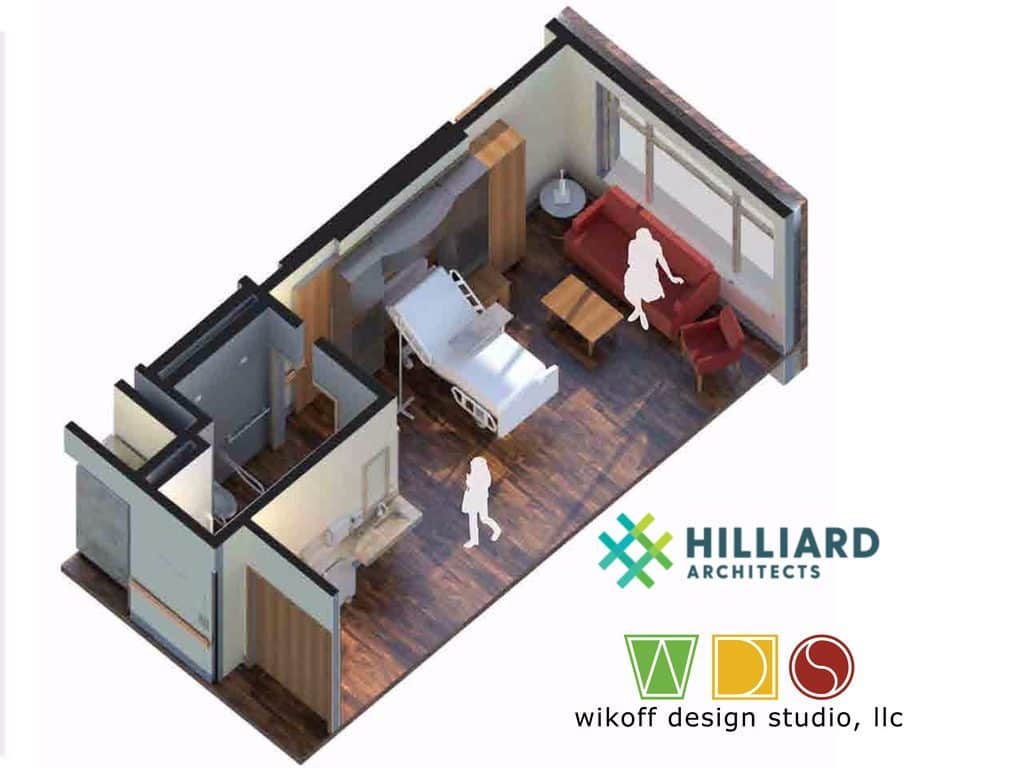Blog
Using Research to Inform Design

Linking research and design is the core of Evidence-Based Design or EBD. In fact, what differentiates EBD from a typical design approach is its emphasis on using research to inform and support design decisions and evaluate design strategies and innovations. Using research helps designers glean valuable insights that inform design decisions.
In EBD, research generally refers to empirical research – the systematic investigation of tangible facts. In other words, empirical evidence is information acquired by observation or experimentation.
For example, noise levels in nursing units measured by sound-level meters, data regarding a patients’ length of stay and the observed interaction between staff member are all examples of empirical data. Subjective data is considered empirical when it is gathered through interviews, questionnaire surveys, rating scales, and other measurement tools.
Pilot Projects
It is not uncommon for designers who are testing a hypothesis to conduct a small-scale pilot project to test the effectiveness of a product or design. The pilot projects provide another opportunity to collect data which further informs design.
Case Study – Sacramento VA Medical Center
The desire to operational efficiency was the motive behind the 4th-floor renovations that happened last year at the Sacramento VA Medical Center. Rather than do an entire redesign all at once, the VA Administration decided to build models meant to test, evaluate and revise until the results showed operational efficiency.
Models Built to Test
To begin, the VA administration design team identified their goals and the problems they face. Next, they decided that Evidence-Based Design or EBD techniques would be the best approach to the problems. The EBD principles state that design decisions should benefit the patient, their family, the staff and the hospital’s bottom line. Next, the VA Team asked healthcare design experts Hilliard Architects Inc. and Wikoff Design Studio to build five model rooms. The rooms were to be built on-site for the sole purpose of testing and acquiring feedback from the same staff who will eventually work in the final environment.
During the testing phase, the staff is asked to visit each model room and go through their everyday workflows. The VA administration collected the data in the form of feedback from every member of the staff. Once the data was gathered. It was evaluated and adjustments to the design were made. This exciting approach is sure to result in a well-design hospital.
About the Models

Hilliard Architects Inc. and Wikoff Design Studio put together five initial room designs. They built the following models:
- Patient Room
- Family Area
- Family Conference Room
- Nurses Station
- Staff Lounge
Each model included the latest in healthcare design trends heavily influenced by Evidence-Based Research.
The models were designed to provide patients and their families with the utmost care and streamline the tasks of hospital staff. Architectural and interior design modifications were made specifically to improve staff workflow and prevent injury and infection. The models use simple way-finding techniques that help people easily navigate the hospital.
EBD Can Change Healthcare for the Better
Looking forward, EBD can make a difference in the lives of patients, families, and staff by providing improvements in:
- Patient Care
- Quality
- Patient Safety
- Patient Satisfaction
- Staff Safety
- Job Satisfaction
- Environment
All these improvements would support the healthcare organization’s goals and ad value to all outcomes. Evidence-Based Design is an important process that can help change healthcare for the better.
Marie Wikoff is the creator of Wikoff Design Studio based out of Reno, Nevada. Her expertise in healthcare design has helped modernize healthcare organizations locally, regionally, and internationally, improving patient experience and outcomes. Her credentials include Evidence-Based Design Accreditation and Certification (EDAC), American Academy of Healthcare Interior Designer (CHID), the National Council of Interior Design Qualification (NCIDQ) and LEED AP. Contact Marie Wikoff
Sources:
- Hilliard Architects https://hilliardarchitects.com/about/
- Wikoff Design Studio https://wikoffdesignstudio.com/







